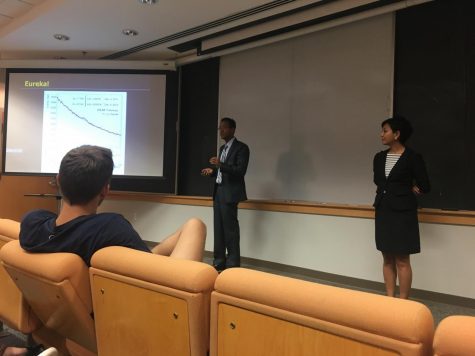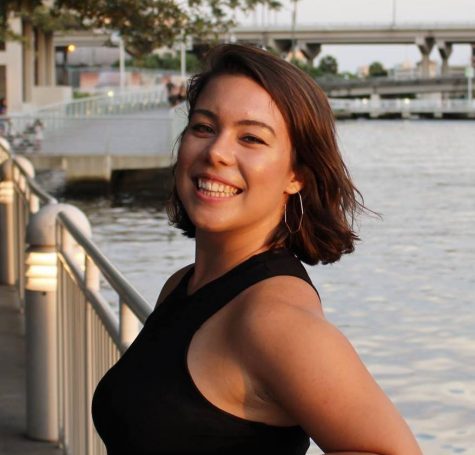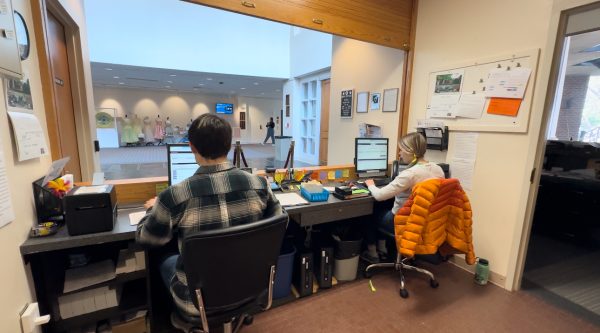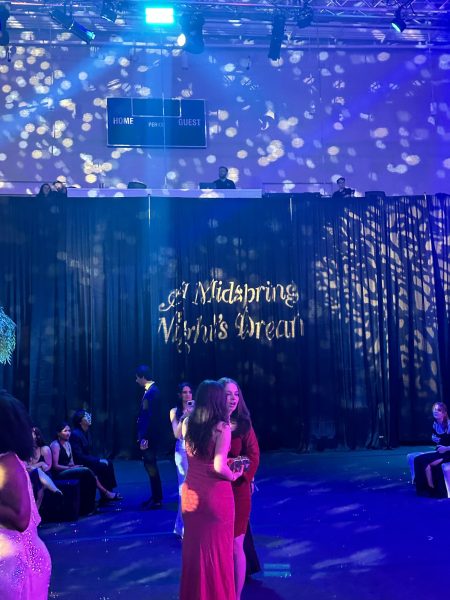W&L hosts reps from famous European research organization
Physicist, journalist from CERN speak on importance of teamwork, diversity in workplace
October 10, 2017
Science at the European Organization for Nuclear Research (CERN) transcends geographical, academic and linguistic borders through research and discovery.
Physicist Suyog Shrestha and journalist Abha Eli Phoboo of CERN spoke on this topic at Washington and Lee University on Sept. 18.
Rossella Gabriele, ’19, attended the talk, which bridged her two majors, global politics and physics.

“The presenters did a great job of expressing the power of science and research as a means of peace-building across national borders,” she said.
The CERN presentation initiated a four-day event as part of the two-year Borders and Their Human Impact colloquium on campus, sponsored by the Center for International Education.
Phoboo spoke about how CERN employees cross the Swiss/French border every day to go into work and even to cross from one cafeteria to the other, only marked by a stone on the ground.
“Nobody even notices it,” she said. “If you go to the cafeteria at
CERN, it’s like the Tower of Babel.”
Shrestha agreed.
“While there are hundreds of languages spoken in the cafeteria at CERN, we are all united by the language of science,” Shrestha said.
The mission of CERN is to “push back the frontiers of knowledge, develop new technologies for accelerators and detectors, train scientists and engineers of tomorrow and unite people from different countries and cultures,” they said.
The global scientific collaboration was created by a UNESCO mandate in 1954 as part of the Science for Peace program.
“With this we also noticed that science is not just about one person working alone in a corner,” Phoboo said. “Science has changed. You need people. You need different groups of people, you need diversity, you need diversity of ideas, you need different approaches.”
CERN’s scientific advancements include the World Wide Web, invented in 1989 by Tim Berners-Lee. It was invented to globally share information between physicists through the world’s first website and web server, Info.cern.ch.
The most recent discovery, the Higgs boson particle, was made through the ATLAS physical experiment at the CERN Large Hadron Collider, the world’s largest and most powerful particle accelerator. It works by photographing moments of particle collision, which are then analyzed by physicists like Shrestha. The Higgs boson particle was confirmed on July 4, 2012, as the origin of mass of subatomic particles.
“People one hundred years from now will look back at this date
like we look back on the 1905 discovery of E = mc2,” Shrestha said.













